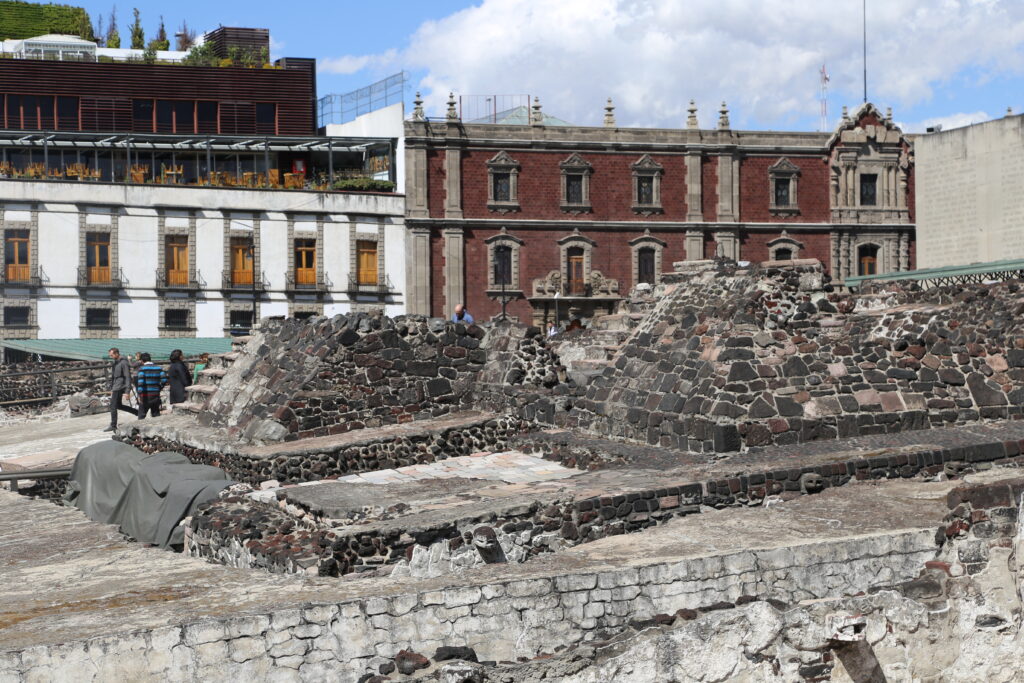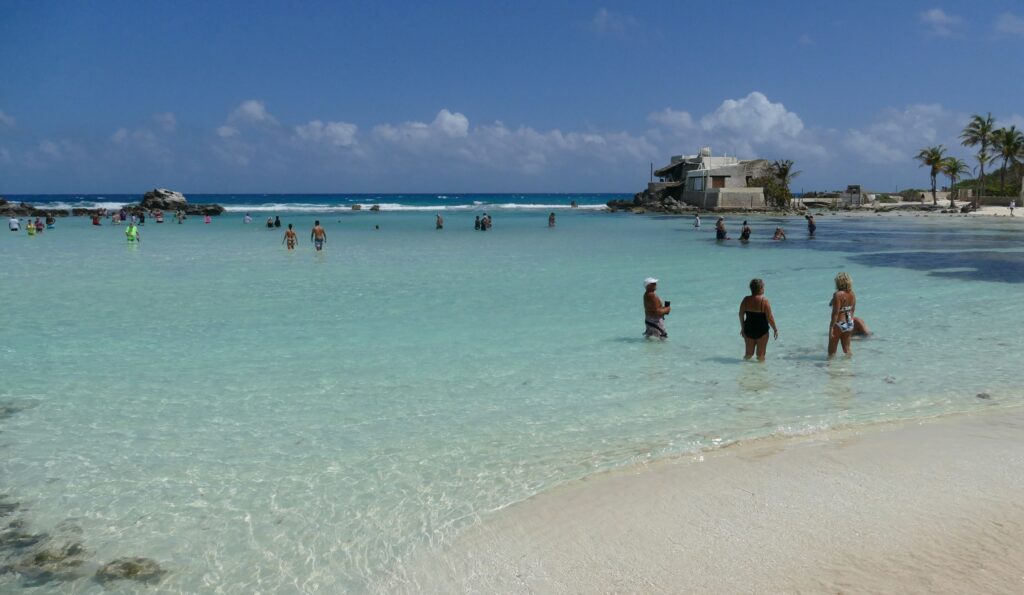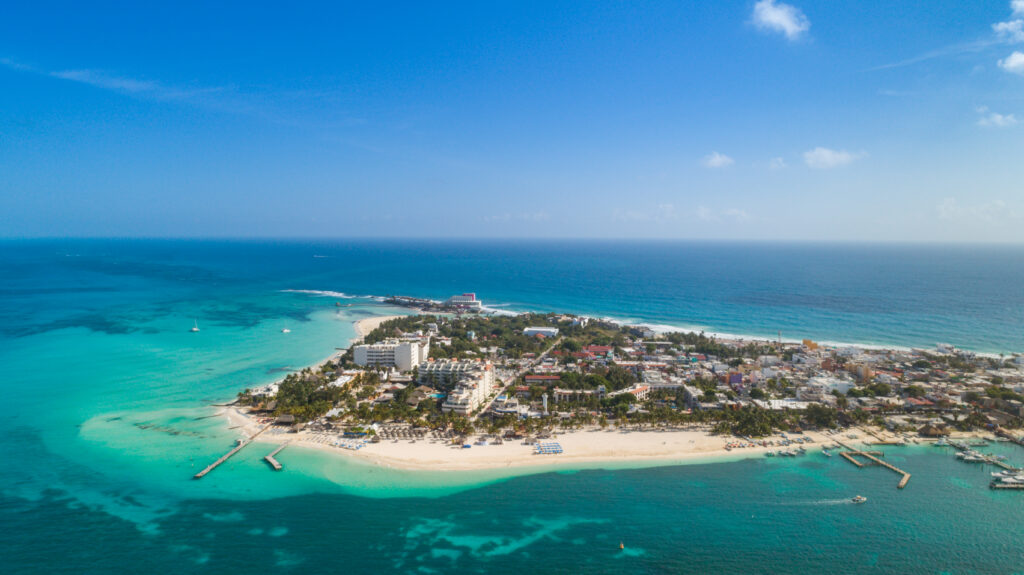
Introduction to the History and Culture of Mexico
Mexico is a country with a rich and complex history that dates back thousands of years. From the ancient civilizations of the Olmecs, Maya, and Aztecs to the Spanish conquest and the subsequent struggle for independence, Mexico’s history is marked by cultural, political, and social changes that have shaped the country into what it is today. In this text, we will provide an overview of Mexico’s history and culture, from prehistoric times to the present day, with a focus on the major events, people, and trends that have shaped the country over time.
Pre-Columbian Mexico
Mexico’s pre-Columbian history is characterized by the rise and fall of several major civilizations that flourished in different regions of the country. The first known civilization in Mexico was the Olmec, who lived in the southern Gulf Coast region from about 1200 to 400 BC. The Olmec are known for their monumental stone heads, which depict stylized human faces and are among the most recognizable artifacts of pre-Columbian Mexico.
The Maya civilization, which flourished in the Yucatan Peninsula and parts of Central America from about 2000 BC to the 16th century AD, is known for its impressive achievements in mathematics, astronomy, and architecture. The Maya developed a complex system of writing, which is still being deciphered by scholars today, and their cities featured impressive structures such as pyramids, palaces, and ball courts.
The Aztecs, who dominated central Mexico from the 14th to the 16th century, are perhaps the most well-known of Mexico’s pre-Columbian civilizations. The Aztecs built their capital, Tenochtitlan, on an island in the middle of a lake, and developed a sophisticated system of government, trade, and military organization. They also practiced human sacrifice as part of their religious rituals, which was a source of controversy among the Spanish conquistadors who later arrived in Mexico.
Spanish Conquest and Colonial Mexico
In 1519, the Spanish conquistador Hernan Cortes arrived in Mexico with a small army and began the conquest of the Aztec Empire. After a two-year campaign, Tenochtitlan fell to the Spanish in 1521, marking the beginning of a new era in Mexican history. The Spanish imposed their language, religion, and culture on the native peoples of Mexico, and established a colonial system that lasted for over 300 years.
During the colonial period, Mexico’s economy was based on silver mining and agriculture, and the country became a major source of wealth for the Spanish Empire. The Spanish also built impressive cathedrals, monasteries, and palaces throughout Mexico, many of which are still standing today as reminders of the colonial era. However, the Spanish also exploited and oppressed the indigenous peoples of Mexico, and there were frequent uprisings and rebellions against Spanish rule.
Independence and the Mexican Revolution
In the early 19th century, Mexico began to experience a growing sense of national identity and a desire for independence from Spain. In 1810, a Catholic priest named Miguel Hidalgo launched a rebellion against Spanish rule, which eventually led to the establishment of an independent Mexican state in 1821. However, the struggle for independence was not without its challenges, and Mexico went through several years of political instability and internal conflict before settling into a stable government.
The late 19th and early 20th centuries saw the rise of another major event in Mexican history: the Mexican Revolution. The revolution, which began in 1910, was a long and bloody struggle for political and social reform, and it resulted in the overthrow of the long-ruling dictator Porfirio Diaz and the establishment of a new government. The revolution was led by a number of charismatic and controversial figures, including Emiliano Zapata, Francisco “Pancho” Villa, and Venustiano Carranza, and it had a profound impact on Mexican society, politics, and culture.
One of the key outcomes of the revolution was the adoption of a new constitution in 1917, which established Mexico as a federal republic and enshrined a number of progressive reforms, including labor rights, land reform, and women’s suffrage. The revolution also paved the way for the emergence of a new cultural movement, known as the Mexican Renaissance, which celebrated Mexico’s indigenous heritage and sought to create a distinctively Mexican art and literature.
Modern Mexico
In the years since the Mexican Revolution, Mexico has undergone significant political, social, and economic changes. The country has experienced periods of political stability and economic growth, as well as periods of turmoil and upheaval. In the 1980s and 1990s, Mexico underwent a major economic transformation, known as the “Mexican Miracle,” which saw the country become a major player in the global economy. However, the benefits of this transformation were not evenly distributed, and many Mexicans continue to struggle with poverty, inequality, and social exclusion.
Today, Mexico is a vibrant and diverse country, with a rich cultural heritage that is celebrated around the world. The country is known for its colorful folk art, its delicious cuisine, and its vibrant music and dance traditions. Mexico is also home to a number of UNESCO World Heritage sites, including ancient ruins, colonial cities, and natural wonders.
In conclusion, Mexico’s history and culture are complex and fascinating, with a rich tapestry of pre-Columbian civilizations, colonialism, revolution, and modernization. From the Aztec Empire to the Mexican Renaissance to the modern global economy, Mexico has undergone a wide range of changes and transformations over the centuries. Understanding the history and culture of Mexico is essential for anyone who wants to appreciate the country’s unique beauty, diversity, and spirit. In the next part of this text, we will dive deeper into some of the key themes and events of Mexican history, exploring the major figures, movements, and ideas that have shaped the country over time.
Pre-Columbian Civilizations
The history of Mexico begins long before the arrival of the Spanish in the 16th century. For thousands of years, the region was home to a variety of complex and sophisticated civilizations, including the Olmec, Maya, Zapotec, and Aztec. These civilizations developed complex social, political, and religious systems, built monumental architecture, and made significant contributions to science, mathematics, and art.
The Aztecs, in particular, are one of the most well-known and influential pre-Columbian civilizations. They founded the city of Tenochtitlan in 1325, which became the capital of the Aztec Empire. The Aztecs developed a complex system of government, with a powerful emperor at the head, and a well-organized bureaucracy that oversaw taxation, trade, and military affairs. They also had a rich religious tradition, with a pantheon of gods and goddesses, and a system of human sacrifice that was deeply ingrained in their culture.
Spanish Conquest and Colonialism
In 1519, the Spanish conquistador Hernán Cortés arrived in Mexico, marking the beginning of the Spanish conquest of the region. The conquest was brutal and bloody, with the Spanish using their superior military technology to overpower the indigenous peoples. By 1521, they had conquered the Aztec Empire and established a colony, which they called New Spain.
Over the next three centuries, New Spain became one of the most important colonies in the Spanish Empire, and it played a significant role in shaping the culture, politics, and society of Mexico. The Spanish introduced Catholicism to the region, built magnificent churches and cathedrals, and established a system of government and law that reflected European traditions. They also exploited the region’s natural resources, particularly silver, which fueled the Spanish economy and enriched the Spanish elite.
Despite this, the colonial period was also a time of resistance and rebellion. Indigenous peoples, African slaves, and mixed-race mestizos all fought against Spanish domination, seeking greater freedom and autonomy. One of the most famous rebellions was led by the indigenous leader, Túpac Amaru II, in the late 18th century. Although the rebellion was ultimately crushed, it served as a powerful symbol of resistance and inspired later movements for independence.
Mexican Independence
In 1810, the Mexican War of Independence broke out, led by the Catholic priest Miguel Hidalgo. The war was fought against the Spanish colonial authorities and was driven by a desire for greater political and economic freedom. After a decade of fighting, the rebels succeeded in achieving independence, and Mexico became a sovereign nation in 1821.
The early years of Mexican independence were marked by political instability and economic hardship. The country was deeply divided between conservative and liberal factions, and there were frequent rebellions and uprisings. The government struggled to establish a stable political order and to address the country’s many social and economic problems.
In the mid-19th century, Mexico underwent a period of reform, led by the liberal president Benito Juárez. Juárez implemented a number of progressive reforms, including the separation of church and state, the abolition of slavery, and the establishment of a more democratic government. These reforms helped to modernize Mexico and set the stage for the country’s future development.
Mexican Revolution
In 1910, Mexico underwent a major social and political upheaval, known as the Mexican Revolution. The revolution was driven by a desire for greater social justice and political freedom, and it led to the overthrow of the long-ruling dictator Porfirio Díaz and the establishment of a more democratic government.
The revolution was characterized by a wide range of political, social, and cultural movements, with various factions fighting for control of the country. These included the Zapatistas, who fought for land reform and indigenous rights, and the Villistas, who sought to establish a more socialist government.
The revolution was a long and bloody conflict, lasting over a decade and resulting in the deaths of hundreds of thousands of people. However, it also led to significant social and political reforms, including the establishment of labor rights, land reform, and universal suffrage.
Post-Revolutionary Mexico
After the revolution, Mexico underwent a period of consolidation and modernization. The government implemented a number of social and economic reforms, including the nationalization of key industries, the establishment of labor unions, and the creation of a system of social security.
However, the country also faced significant challenges during this period, including political instability, economic crises, and ongoing violence. The government was often criticized for its authoritarian tendencies and its failure to address the country’s many social and economic problems.
In the 1980s, Mexico began a period of economic liberalization and modernization, known as the “neoliberal era.” This period was marked by the privatization of state-owned industries, the opening of the economy to foreign investment, and the implementation of free trade policies.
While these policies led to significant economic growth, they also had negative consequences, including increased inequality and social unrest. In recent years, Mexico has faced a range of challenges, including ongoing violence, political corruption, and environmental degradation.
Conclusion
In conclusion, the history of Mexico is a complex and multifaceted story, shaped by a wide range of political, social, and cultural forces. From the pre-Columbian civilizations to the Spanish conquest, from independence to the Mexican Revolution, and from modernization to neoliberalism, Mexico has undergone a series of profound transformations over the centuries.
Today, Mexico is a vibrant and dynamic country, with a rich cultural heritage and a diverse population. While the challenges facing the country are significant, Mexico has shown remarkable resilience and perseverance in the face of adversity. By understanding the country’s history and its ongoing struggles, we can better appreciate its many achievements and its ongoing efforts to build a more just and equitable society.
In summary, the history of Mexico is a fascinating and complex story that spans thousands of years. From the ancient civilizations of Mesoamerica to the Spanish conquest, from the struggle for independence to the Mexican Revolution, and from modernization to neoliberalism, Mexico has undergone a series of profound transformations that have shaped its identity and culture.
Despite the challenges and difficulties that Mexico has faced throughout its history, it has also demonstrated remarkable resilience and perseverance in the face of adversity. Today, Mexico is a vibrant and dynamic country that is home to a rich and diverse cultural heritage.
By exploring the history of Mexico, we can gain a deeper understanding of the country’s unique identity and culture, as well as the challenges and opportunities that it faces today. Whether you are a tourist visiting Mexico for the first time, or a student of history and culture, the story of Mexico is one that is both fascinating and inspiring.
.
Links to Site of Interest
.
Find the Best Tourist Information on the Best websites
- TripAdvisor (www.tripadvisor.com)
- Expedia (www.expedia.com
- Lonely Planet (www.lonelyplanet.com)
- Kayak (www.kayak.com)
- Airbnb (www.airbnb.com)
- Viator (www.viator.com)
- VisitTheUSA (www.visittheusa.com)
- Fodors (www.fodors.com)
- Google Maps (www.google.com/maps)
- Yelp (www.yelp.com)
- Booking.com (www.booking.com)
- Hotels.com (www.hotels.com)
- Travelocity (www.travelocity.com)
- Priceline (www.priceline.com)
- Orbitz (www.orbitz.com)
- CNN Travel (www.cnn.com/travel)
- National Geographic Traveler (www.nationalgeographic.com/traveler)
- Frommer’s (www.frommers.com)
- Conde Nast Traveler (www.cntraveler.com)
- Rough Guides (www.roughguides.com)
- Smarter Travel (www.smartertravel.com)
- Budget Travel (www.budgettravel.com)
- GoCity (www.gocity.com)
- CheapOair (www.cheapoair.com)
- Skyscanner (www.skyscanner.com)
- Hopper (www.hopper.com)
- Momondo (www.momondo.com)
- Roadtrippers (www.roadtrippers.com)
- The Points Guy (www.thepointsguy.com)
- SeatGuru (www.seatguru.com)
- JohnnyJet (www.johnnyjet.com)
- Kayak Explore (www.kayak.com/explore)
- Hipmunk (www.hipmunk.com)
- Rome2rio (www.rome2rio.com)
- Trivago (www.trivago.com)
- Roadside America (www.roadsideamerica.com)
- Atlas Obscura (www.atlasobscura.com)
- AllTrails (www.alltrails.com)
- Outdoor Project (www.outdoorproject.com)
- Ski.com (www.ski.com)
- Snowpak (www.snowpak.com)
- Ski Utah (www.skiutah.com)
- Ski Vermont (www.skivermont.com)
- Liftopia (www.liftopia.com)
- SkiCentral (www.skicentral.com)
- Ski Net (www.skinet.com)
- Snow-forecast (www.snow-forecast.com)
- Ski Magazine (www.skimag.com)
- Powder Magazine (www.powder.com)
- Snowboarder Magazine (www.snowboarder.com)
.
Stay Informed With America´s Top Media
CNN | The New York Times | The Washington Post | The Wall Street Journal | BBC News | Reuters | Associated Press | NPR | The Economist | ABC News | NBC News | CBS News | The Guardian | Al Jazeera English | Politico | Bloomberg News | USA Today | Fox News | Time | Newsweek | The Atlantic | Forbes | Business Insider | The Hill | Los Angeles Times | Chicago Tribune | Miami Herald | San Francisco Chronicle | Dallas Morning News | Houston Chronicle | Boston Globe | Philadelphia Inquirer | Atlanta Journal-Constitution | Seattle Times | Denver Post | Arizona Republic | Las Vegas Review-Journal | Detroit Free Press | Minneapolis Star Tribune | New Orleans Times-Picayune | New Orleans | St. Louis Post-Dispatch | Salt Lake Tribune | Kansas City Star | Indianapolis Star | Charlotte Observer | Pittsburgh Post-Gazette | Tampa Bay Times | Cincinnati Enquirer | Columbus Dispatch | Nashville Tennessean
.
Air Transport Companies
American Airlines | United | Alaska Airlines | Aeromexico | Volaris |
.
Travel Agency
Bestday | Expedia | Travelocity | Priceline | Booking | Kayak | Orbitz | TripAdvisor | CheapTickets | Hotwire | American Express Travel | AAA Travel | Liberty Travel | Travel Leaders Group | Frosch Travel | Protravel International | World Travel Holdings | Ensemble Travel Group | Signature Travel Network | Virtuoso | Carlson Wagonlit Travel
.
.





